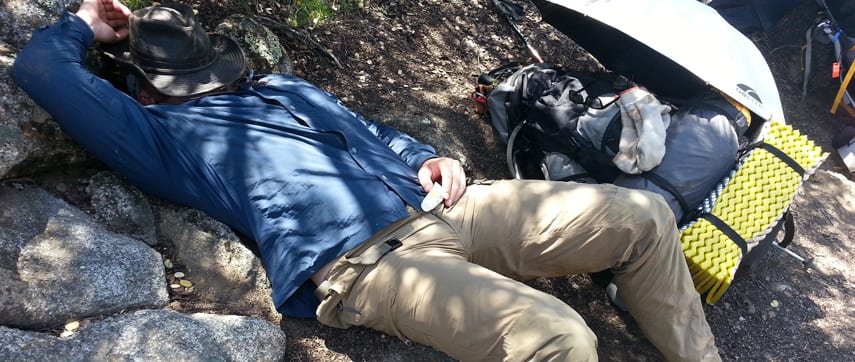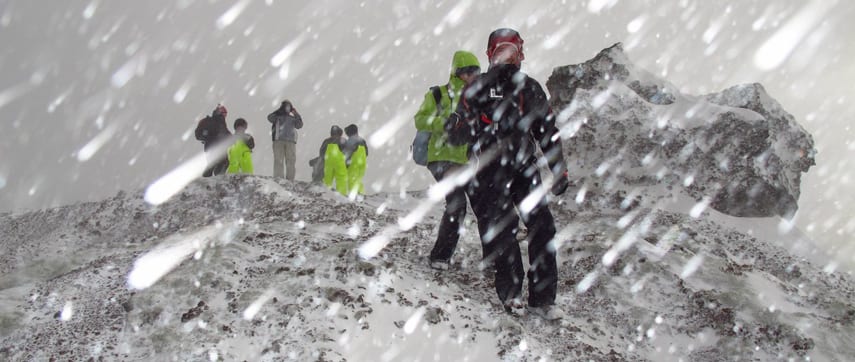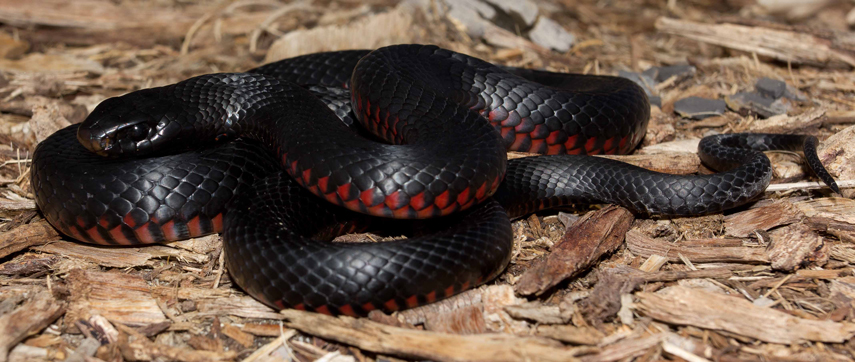Prepare to hike in hot weather
Summer is one of the best time to get outdoors and go hiking. Clear, sunny skies and long daylight hours can all mean and amazingly full day on the trail. Unfortunately here in Australia summer can also be one the worst possible times to go outside.
It’s possible to enjoy the outdoors in our brutal summer weather. You just have to adjust your thinking a bit and take a few extra precautions beyond the basics (like making sure to tell someone where you’re hiking). You don’t have to let high temperatures keep you off the trails.

1. Start your hike early
Nobody likes waking up early , especially during the working week and even fewer people like waking up early on the weekend – but if you don’t want to go for weeks without getting your boots dirty, you’re going to have to get an early start.
Not everyone likes to wake up early, and your trip doesn’t have to feel like work; just find a balance between how much sleep you need and minimizing your exposure to afternoon heat. Get organized in camp with gear to facilitate a quicker morning departure – eating breakfast and packing up doesn’t have to take two hours.

2. Cover up
It may seem counterproductive to cover up on a hot day but pulling on some long sleeves is actually the best thing you can do. The more of your body you can shield from the sun, the happier you’ll be. Loose-fitting long sleeves and pants paired with a wide-brimmed hat will do wonders on a summer hike.
Remember to shield your eyes with some UV-blocking sunglasses and lather that sunscreen on every exposed part of your body – especially if you’re hiking at altitude. The sun is stronger up there and you’ll get burned faster – even more so if you’re constantly sweating it all off.

3. Keep yourself hydrated
Keeping yourself hydrated during any season is extremely important. If you are hiking during summer physical exertion and hot, dry conditions can cause you to become dehydrated very quickly. The easiest way to combat dehydration is to drink lots of fluids before during and after any adventure.
When the body temperature increases and is unable to cool itself properly heat exhaustion can occur. The best way to keep from getting heat exhaustion is to stay hydrated and do not hike or climb during the hottest part of the day. Here’s a tip I have learnt; When you’re done drinking from a hydration bladder, blow back into the mouth piece so the water doesn’t stay in the drinking tube. There are few things worse than getting a mouthful of hot, sun-soaked water on your first gulp and this will at least ensure your next sip is temperate.
A couple of things that I like to do to aid hydration both during and after a hike. The night before your hike, partially fill your drink bottles and place them in the freezer overnight. In the morning, fill them to the top with tap or chilled water. This will provide you with a refreshing cold drink on the trail. I addition to this, partially fill a two liter bottle with water, leave this in the freezer also and top up in the morning. Leave this in a cool spot in your car so that when you return from your hike you can easily re-hydrate without having to make a dash to the shops.

4. Learn to identify heat exhaustion
Heat exhaustion can occur when you have inadequate or unbalanced replacement of fluids caused by physical exertion during high temperatures. When the body temperature increases and is unable to cool itself properly heat exhaustion can occur. Heat exhaustion is a step above dehydration, but less severe than heat stroke. Heat exhaustion can be easily treated as long as the symptoms are noticed early and treatment administered as soon as the symptoms begin. You can read about how to treat heat exhaustion here.
Symptoms of heat exhaustion
- Headache
- Nausea
- Muscle cramps
- Cool, moist skin with goose bumps when in the heat
- Heavy sweating
- Faintness
- Dizziness
- Fatigue
- Weak, rapid pulse
- Becoming light headed or dizzy when standing up
5. Eat lots of chips
Not really, that was just to get your attention. This is really about the importance of replacing lost salts. It is not enough to simply replace the water your body is losing – you also have to re-balance those electrolytes. Sodium and potassium are the two big ones you’ll need to make sure you don’t run out of energy.
Always look for sources with complex carbohydrates (whole wheat bread, carrots, rice, nuts, fruit, vegetables) instead of simple ones (sugar) – the complex carbs will be easier on your stomach and give you a longer, more sustained energy boost than simple sugars. Trail mix or scroggin is great for this – and even better when paired with a starchy fruit like an apple. Or you can pack some electrolyte drink mixes or tabs along with your regular drinking water, too.
6. Rest often
Remember that most hikes are not races (unless you are on one of mine). While you’re eating those snacks and sipping that water find some time to sit down in the shade. Get wet to cool off if you’re getting hot. Unwind. Relax and take the time to observe and appreciate the natural beauty around you. Learn to look for the birds, plants and animals.
Taking the time to rest on a hot day will allow your muscles to recover and will allow your body to cool as the perspiration evaporates. If you are feeling fatigued don’t be afraid to tell others in your group that you need a break. Speaking up might just save your life.
7. Check the weather forecast
You should always take the weather into consideration before setting out on any hike. If you’re hiking in a mountainous area, be aware that weather in the mountains is generally colder and more severe than in the valleys and the weather can change quickly.
Often in higher elevations, especially above treeline, rain, snow and fog are possible at any time of the year. If you’re hiking at altitude during summer be mindful of the fact that the sun is stronger up there and you’ll get burned faster – even more so if you’re constantly sweating it all off. Before setting out on a hike, be sure to check the most up-to-date forecast for the area you’ll be hiking. If you’re hiking to mountain summits and remote locations be sure you know what weather expected there, not just in the valley below.
Always check the forecast again just before you start your hike as the weather may have changed between the time you left home and arrived at the trail-head.
8. Be fire ready
While you are checking the weather forecast you should also take the time to check for any fire warnings in the region you will be hiking. Don’t just check the immediate area of your hike but check the conditions in a 50km radius from your route. Fires can more rapidly in hot, dry conditions, particularly if the wind pushing the fire front along.
It is your responsibility to be aware of the conditions and never rely on one source of information alone. While you are planning your hike make yourself aware of any rivers, creeks or large bodies of water where you can seek refuge should things turn bad and plan any possible escape routes.
If you are using a campfire for cooking and/or warmth make sure you extinguish it thoroughly so that you don’t start a bush fire yourself. Being prepared will increase your chance of returning safely so plan your hike thoroughly and stay alert at all times.
9. Be snake aware
From Spring through to Winter it is Snake season and time to keep a constant eye out for our little slithery friends. When on the trail avoid hiking in areas where snakes are known to be. Stay out of tall grass and on the trail as much as possible. If you must invade snake territory, wear long pants, ankle-high boots, or even snake-proof gaiters.
Be careful when stepping in areas where snakes could be hiding, such as under rocks or logs. If you are entering an area where you can not see your feet, kick ahead of you to give snakes enough warning and time to slither away. Always keep your hands and feet out of areas where you are unable to see them and be careful around rocks or while picking up firewood.
Snakes can strike from a distance of half their body length. Let the snake slip away, or walk around it. When scrambling up rocky trails, watch where you put your hands, especially on sunny ledges.
Many people believe that snakes are only active during the hottest part of the day, basking in the sun. However, in Australia, this isn’t the case. Snakes tend to avoid the blistering heat and are often more active during the cooler parts of the day—such as early mornings, evenings, and even at night. I’ve even encountered a few on the trails after dark.
10. Plan your hike
I cannot stress enough the importance of thorough planning. If you plan for the worst it will rarely happen and you will enjoy your outdoor adventure a great deal more knowing that you have the knowledge and confidence to return home safely. Plan your hike for the forecast conditions, the fitness level and experience of the slowest member of your group and always let someone know before you go.
If it is too hot, then simply change your plans and don’t go.












Huh? Wrong time of the year?
not really. The weather is still hot.